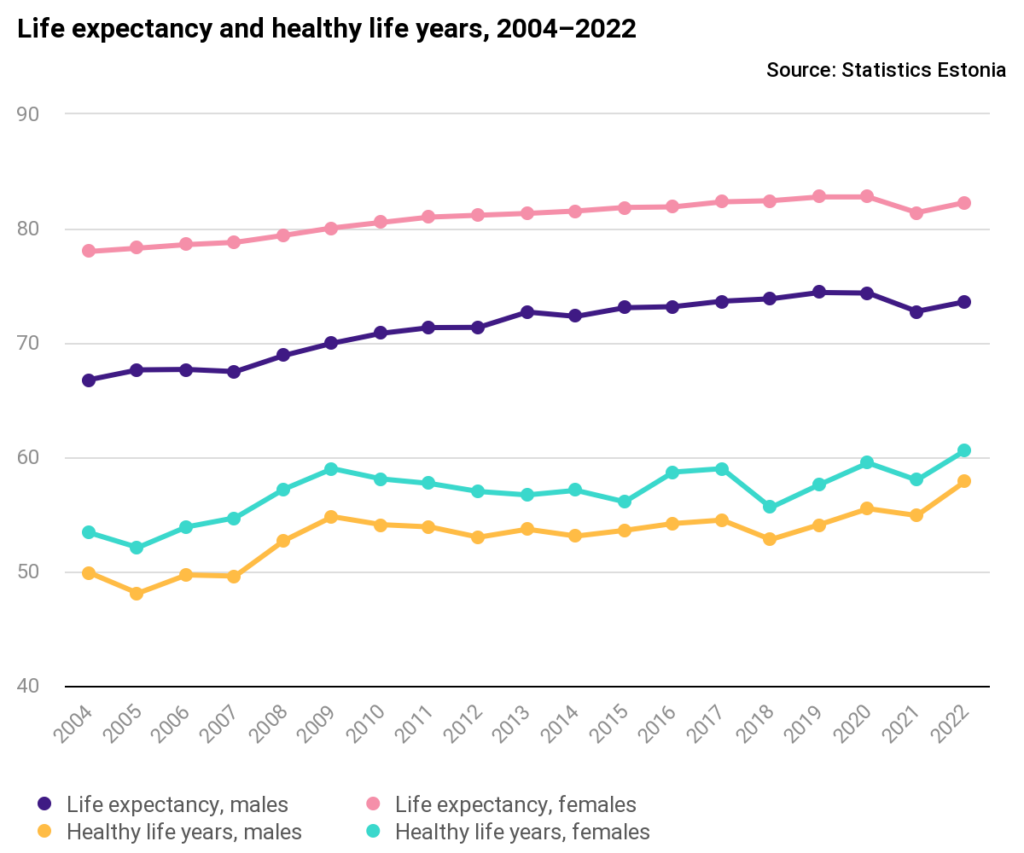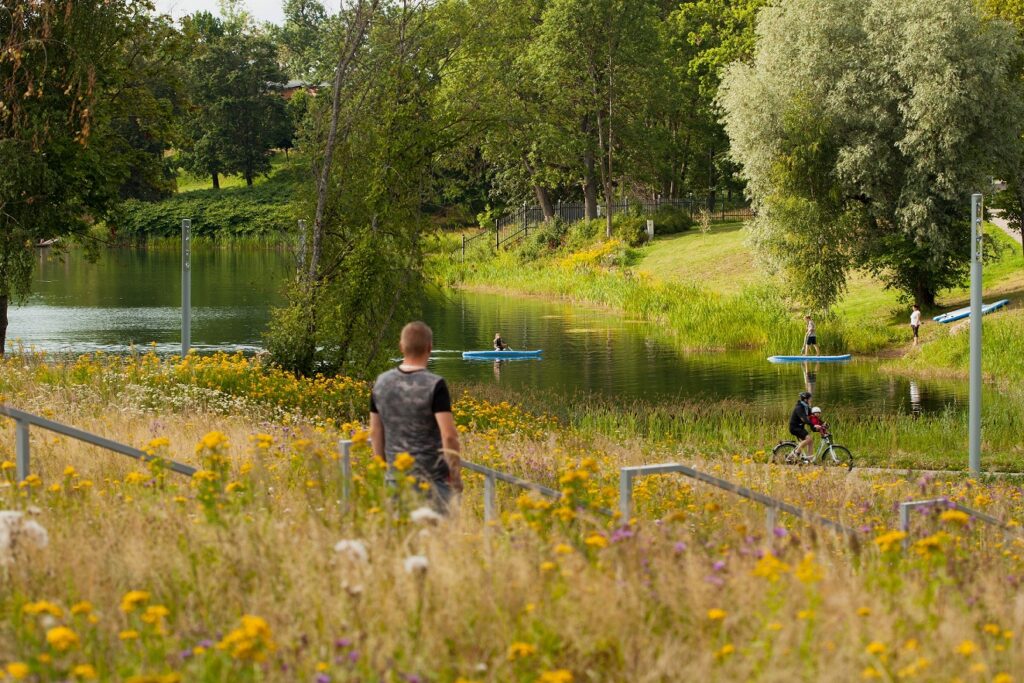According to Statistics Estonia, the country’s official statistics agency, in 2022, life expectancy at birth was 78.1 years in Estonia; also, the Estonian people live more years free of disability.
Male life expectancy was 73.6 years and female life expectancy was 82.3 years. Men live disability-free for 57.9 years and women for 60.6 years, the statistics agency said.
In the period since the restoration of independence in 1991, life expectancy was the lowest in 1994 – 66.5 years. Life expectancy increased steadily from 1995 until 2019, reaching 78.8 years in 2019. Over the next two years, life expectancy dropped to the level of 2014 (77.2) due to high mortality during the coronavirus pandemic.
“Following the slight decline in the two preceding years, life expectancy is on the rise again and has returned to the pre-pandemic level. Life expectancy in 2022 was similar to life expectancy in 2017, when it was 78.2 years,” Terje Trasberg, a leading analyst at Statistics Estonia, said in a statement.
Women can expect to live 8.7 years longer than men. “In 1990–2009, male life expectancy was over ten years shorter than female life expectancy. Since 2010, the gap has narrowed and was 8.4 years in 2019,” Trasberg said. The life expectancy of men in Estonia has now reached the level of female life expectancy in 1993.
The Estonian people live more years free of disability
Compared with 2021, disability-free life expectancy increased by 2.7 years and was the highest ever. Based on 2022 data, men have 57.9 and women 60.6 healthy life years.

Life expectancy is longer in city regions, among Estonians and among the population with higher educational attainment – life expectancy is 81.8 years for persons with higher education but over ten years less (71 years) for persons with basic education. Life expectancy is especially low among men with basic education (67.6 years).
“The shorter life expectancy for males is to be expected, considering that men are more likely to engage in high-risk behaviours and to have physically demanding and hazardous jobs,” Trasberg noted.
Regionally, life expectancy was the highest in Tartu (79.2) and Harju (78.7) counties, and the lowest in Ida-Viru (74.6) and Võru (76) counties.

Life expectancy below the European average in all three Baltic countries
Based on 2021 data, the average life expectancy in Europe was 80.1 years. Life expectancy was the highest in Liechtenstein, Switzerland and Spain (respectively 84.4, 83.9 and 83.3), and the lowest in Bulgaria, Romania and Serbia (respectively 71.4, 72.8 and 72.8).
All three Baltic countries have a life expectancy (74.2 in Lithuania and 73.1 in Latvia) below the European average. In neighbouring Finland, life expectancy was 81.9 years in 2021, which is 4.7 years more than in Estonia.
In the European comparison, the Baltic countries are notable for the big difference in male and female life expectancies. Compared with men, women live 8.7 years longer in Estonia, 9.3 years longer in Lithuania and 9.8 years longer in Latvia. The average difference between male and female life expectancies in Europe is 5.7 years. In the Netherlands, Norway and Iceland, the difference is between 2.8 and 3.3 years.

In 2021, Malta was the European country with the highest disability-free life expectancy (68.7 years). Latvia ranked last with an average of 53.8 healthy life years. In 2021, Estonia ranked second to last with 56.5 healthy life years.

